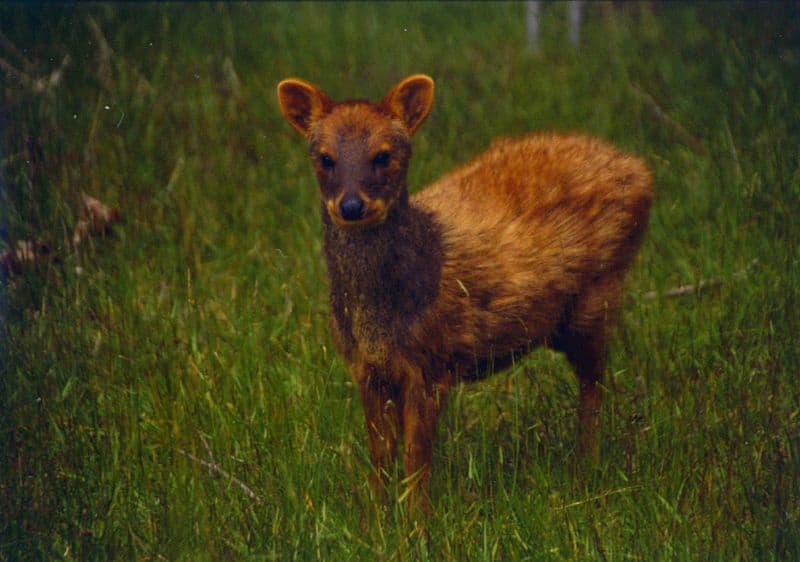Pudu Facts
- Firstly, the gorgeous Pudu is a truly tiny type of deer. This stunning animal is, in fact, the smallest known deer on Earth.
- There are also two subspecies, both of which remain endemic to portions of the same part of the world. The deer is quite rare and highly reclusive and as a result, information about its behavior patterns is scarce.
- Due to several reasons, both species of Pudu appear on the IUCN Red List. One lists as Near Threatened, yet the other lists as Data Deficient.
- Finally, efforts to preserve both species are underway. These include captive breeding and the creation of National Parks within its native habitat.
Related Articles
Pudu Physical Description
The Pudu possesses a somewhat stocky frame versus other deer species but the legs grow comparatively slender. In addition, adult animals may reach a height of 17 in (44 cm) at the shoulder.
Further, in length, individuals are about 33 in (85 cm). An average weight among measured individuals is 26 lb (12 kg) and the heaviest Pudu on record weighed 30 lb (13.4 kg).
The deer displays sexual dimorphism in regards to antlers – only the males produce those. The antlers are shed on an annual basis.
The tail is short, averaging only 1.8 in (4.5 cm) in length. The color of the fur also changes with the seasons and typical colors include dark brown and reddish brown.
- Kingdom: Animalia
- Phylum: Chordata
- Class: Mammalia
- Order: Artiodactyla
- Family: Cervidae
- Genus: Pudu
Pudu Distribution, Habitat, and Ecology
Most notably, the Pudu lives exclusively within the rainforest parts of South America. That’s because concentrated parts of bamboo thickets and dense brush serve as good protection from predators.
Furthermore, its zone of habitation includes parts of Argentina, Chile, Columbia, Peru, and Ecuador, and population groups range in regions from sea level up to as high as 13,100 ft (4,000 m).
Its native climate is also one of great extremes. These consist of a very damp and moderate winter, and a very dry summer season.
The animal appears to live solitary lives, seeming to gather only for mating. Limited evidence indicates that the Pudu is neither nocturnal or diurnal, but is, in fact, crepuscular in nature. There is also data that the animals are highly territorial.
Species Sharing Its Range
Check out our other articles on 6 Incredible Asian Islands, Luna Moth, Texas Horned Lizard, Amethyst Deceiver, Pewits Nest, Great Hammerhead Shark, Australian Sea Lion, Wood Frog

